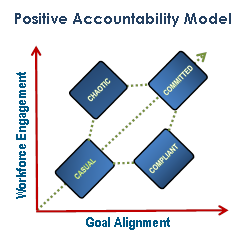Build a Customer-Centric Company That Your Customers Love
How happy are your customers with the experience you provide? Market research from B2B International shows that when satisfaction rates are measured on a scale of 1-10 (10 being high), most companies achieve a score of 8. That may sound like a pretty decent number, but it’s considered “average” because if customers aren’t “wowed” (a score of 9 or 10), they can easily be persuaded to switch brands, products, services, etc. If you can’t afford to lose customers, then take a hard look at how to create a customer-centric culture that can lead to stronger, more sustainable loyalty.
Use these tips as a starting point:
1. Listen And Respond To Your Customers
This can be done in a number of ways—polls, conversations, focus groups, customer advisory boards and more. The key is to develop a strategy around regularly taking the pulse of those you serve. Get their insights—the good, the bad and the ugly—and then take action to address shortcomings and further support and/or build upon successes. Consider doing large-scale research efforts on a periodic basis (e.g., annually) while checking in with customers more often (e.g., direct conversations or through monthly online feedback forms). When changes are made in response to what you’ve learned, let your customers know they’ve been heard, promoting it through social media, in the store, newsletter, email, radio, media release, etc. When you’ve provided them with solutions for their needs, shout it from the mountaintops.
2. Teach Your People Well
Your company’s values go hand in hand with how your organization cares about its customers. As the leader, it’s part of your job to make sure that your people understand that relationship between your company values and how to live those values with respect to customers. For example, if “Relationships” is a value, use your next team meeting or daily huddle to share a story that demonstrates what strong customer relationships look, sound and feel like. When you get real stories about how customers have or have not been supported according to the values, share those, too, so your people can change and excel.3. Practice The “Customers Matter” Mindset
It’s quite common for company decisions to get made without really and truly taking customers’ thoughts and opinions into account. We’re not talking about big decisions because most leadership teams do take into account customer data and behavior when significant changes are afoot. What we’re focusing here are those smaller or seemingly insignificant decisions that sometimes can result in surprisingly bigger consequences or have a cumulative effect when compiled over time. (Think: Starbucks holiday cups.) When ushering any change, always consider the customers’ point of view. One unusual yet fun practice is to put an empty chair marked “customer” at the table when you meet with your teams. This reminder reinforces that the customers’ voice matters and tells your people that you expect this mindset from them, too.
How do you bring your customers “to the table”?



